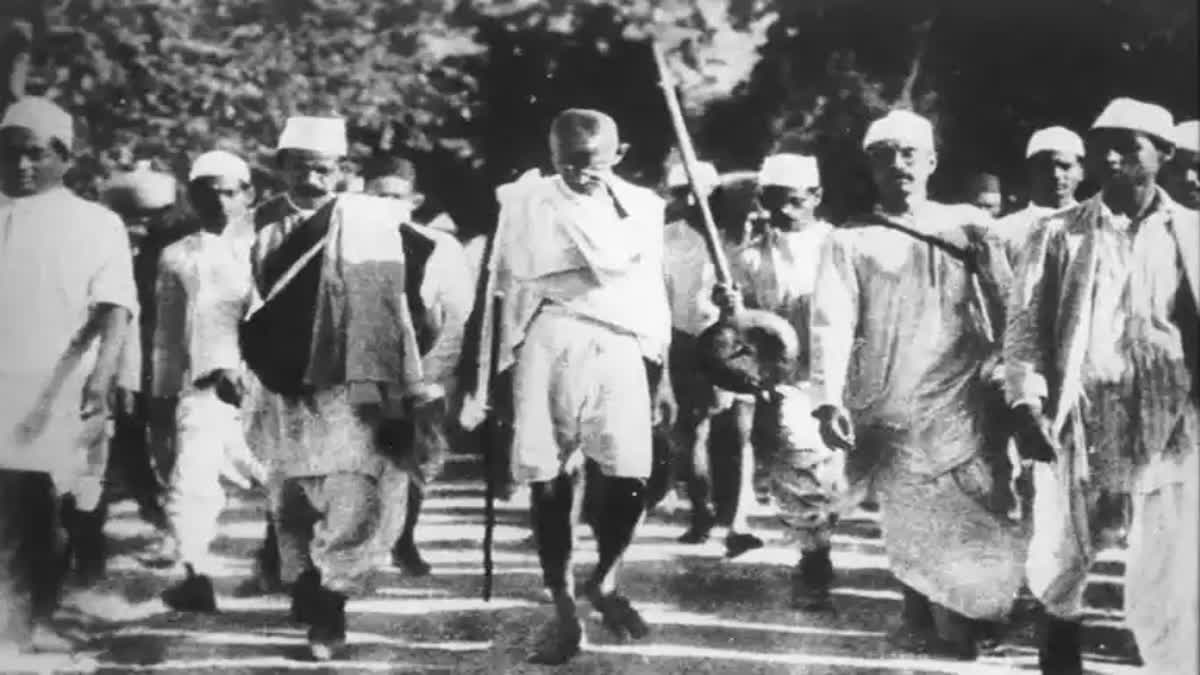Hyderabad: The Dandi March, also known as the Salt Satyagraha, symbolises India’s resilience against injustice and marks a turning point in India’s modern history. Initiated on March 12, 1930, by Mohandas Karamchand Gandhi, the father of the Indian Independence Movement, it was a non-violent protest against the oppressive British Salt Monopoly.
What was the Dandi March?
Gandhi led 78 marchers on an epic 241-mile trek from the Sabarmati on the banks of the River Ganges to the seaport of Dandi where they challenged British policy by making salt from sea water in defiance of the British’s monopoly on salt production.
Before embarking on the march, Mahatma Gandhi sent a letter to the British Viceroy, Lord Irwin, informing him of his intent and urging reconsideration of colonial policies. In the letter, Gandhi said, “If my letter makes no appeal to your heart, on the eleventh day of his month, I shall proceed with such co-workers of the ashram as I can take, to disregard the provision of the salt law.”
Why did Mahatma Gandhi undertake the Dandi march?
The British Raj monopolised salt production and sale in India, while Indians were not allowed to produce or sell salt without the permission of the government. Salt, being an essential ingredient in the daily diet of people, the prohibition seemed unreasonable and oppressive.
The Salt Laws were something that affected the entire nation. Gandhi was aware of the system of oppression and oppression that the British Raj was known for, and the salt law was a perfect example of this. Gandhi's plan was to launch a satyagraha to bring awareness to the people about the British Raj's oppressive regime, and to instill confidence in the people to stand up against it.
Gandhi's non-violent methods of protest, such as the Salt March, which he started by marching from his ashram in Sabarmati to Dandi, provided an opportunity to bring the people together for a common cause that affects everyone. The Salt March was more than just a protest against the government's salt laws, it was a way for the people to come together for a greater goal of 'Swaraj'.
What happened in the march?
As the march progressed through Gujarat, noteworthy incidents, such as Kamaladevi Chattopadhyay leading a group of housewives in Mumbai and Gandhi's decision to extend the march to Dandi, enhanced the significance of the movement. Despite facing adversity, including police resistance, the march continued, with individuals from all walks of life joining in solidarity.
The Dandi March was not merely a symbolic gesture but a catalyst for change, leading the way for the Civil Disobedience Movement and garnering widespread public support and international media attention towards British rule in India. Gandhi's act of picking up salt on April 6, 1930, marked the embarkment of a nationwide movement, characterised by mass participation and unprecedented unity.
The march's impact transcended geographical and societal boundaries, empowering women and fostering inclusivity across caste, religion, and region. Gandhi's adoption of non-violent protest methods resonated deeply, amplifying the momentum of India's struggle for independence.
What after the march?
Beyond its immediate effects, the Dandi March fostered confidence among Indians to confront British rule and galvanised diverse communities into collective action. Gandhi's innovative approach to political protest not only challenged colonial authority but also paved the way for future movements worldwide.
Gandhi’s Salt Satyagraha triggered a wave of similar movements all over the country. The movement against salt laws began in Tamil Nadu, Bengal, Andhra and elsewhere. The government’s refusal to arrest Gandhi for violating the salt laws led to a widespread perception that the government feared such movements.
On April 14, 1930, the arrest of Congress leader, Jawaharlal Nehru, led to massive protests and demonstrations all over the country at that time. The following day, April 15, 1930, a mass demonstration was held in Peshawar. On May 4, 1930, at the midnight, Gandhi was arrested. The news of Gandhi’s arrest galvanized thousands of people.
The Satyagraha went on for a year, and Gandhi was released from prison in January, 1931, after which he entered into negotiations with Lord Irwin. On March 5, 1931, the Gandhi-Irwin Pact was signed in London, leading to Gandhi’s attendance at the 2nd Round Table conference.



